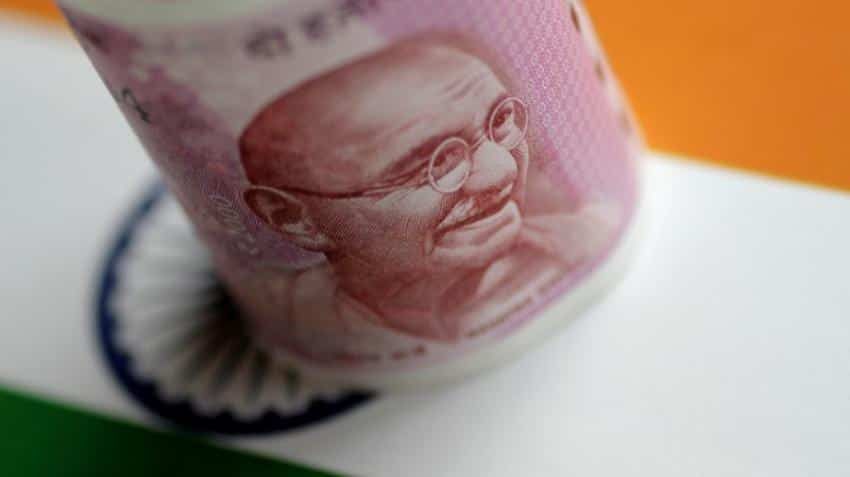Indian rupee hits 16-month low on Karnataka Election impact; how long will effect last? Find out
On Monday, the Indian rupee finished at 68.135 above 0.150 or 0.22% against US dollar. It needs to be noted that, the rupee is in a freefall and touched an over 16-month low.

On the back of dramatic twists and turns in the wake of the announcement of Karnataka Election 2018 result, Dalal Street fell on its knees and saw continuous backlash by investors. The benchmark Sensex finished at 34,616.43 down by 232.17 points or 0.67%, whereas the Nifty 50 tumbled by 79.70 or 0.75% ending at 10,516.70. Where domestic indices were getting hampered by investors, the rupee was choking against US benchmark dollar index. This has made problems worse for the country especially in terms of oil prices. India is already taking heat of higher international crude oil prices - some 86% oil is imported.
On Monday, the Indian rupee finished at 68.135 above 0.150 or 0.22% against US dollar. It needs to be noted that, the rupee is in a freefall and touched an over 16-month low.
Karnataka Assembly Election 2018 result came in on May 15 and this lifted the market and rupee as the current ruling Bharatiya Janata Party at the Centre became the largest party. This boosted investors confidence.
But the tables were turned on the party as Karnataka became a battle zone akin to Game of Thrones serial. BJP failed to prove its majority and led to its chief minister quitting, paving the way for Congress and JD(S) combine's CM pick, Kumaraswamy being invited to form the government.
For now, rupee has reacted negatively to all these happenings.
On rupee's performance today, Anindya Banerjee analyst at Kotak Securities said, “Developments in Karnataka may adversely impact Rupee as it adds to political risk premia in a pre-election year. However, it being a state election, the impact may not last beyond a couple of trading sessions. ”
Banerjee added, “We expect RBI to step in aggressively to protect the all-time lows of 68.86 on the Rupee. As a result, volatility may increase, due to speculative buying coupled with importer demand, being countered by RBI selling.”
Interestingly Kotak highlighted, both oil prices and US yields have backed off from the last weeks high, Brent trading at 79 handle down a dollar from Friday's highs and US 10 year at 3.06, down from 3.12 on Friday. If these markets see further near term weakness, then it will be positive for Rupee. However, another up leg in US yields and US crude, can easily propel USDINR towards 68.86 levels on spot.
On a relative strength, USDINR remains an underperformer in the Emerging Market basket.
In Banerjee’s views, “Near term obstacle is between 68.25/35 levels on spot and then around the all-time highs of 68.86 levels. There are no major economic data scheduled from the Indian economy.”
India depends on imports for crude oil in heavy amounts. Now crude oil has reached over four-year high by clocking nearly $80 per barrel mark. So the situation both rupee and crude oil prices are at peak level, which means the companies, investors as well as consumers will adversely be affected by the depreciation.
When a depreciating rupee makes import of crude oil more expensive, this directly leads to an increase in the operating expense of the companies, which results in weak profit margins. Following this, the real burden is borne by the consumers, as most of the impact on the company from the rise in import prices of crude oil is passed on to the consumers.
Therefore many experts have stated that, it’s NDA government’s win that can ease down the depreciation in Indian rupee. But looks like, Congress has tied the knots in this state and any good news for BJP looks bleak. In this midst how Indian rupee trades against dollar will be keenly watched.
Get Latest Business News, Stock Market Updates and Videos; Check your tax outgo through Income Tax Calculator and save money through our Personal Finance coverage. Check Business Breaking News Live on Zee Business Twitter and Facebook. Subscribe on YouTube.
06:48 PM IST











 Currency market update: Rupee settles 4 paise lower at 83.96 against US dollar
Currency market update: Rupee settles 4 paise lower at 83.96 against US dollar Rupee rises to 83.49 against US dollar in early trade
Rupee rises to 83.49 against US dollar in early trade Rupee slips to end at 83.52 vs dollar
Rupee slips to end at 83.52 vs dollar  Rupee slips to end at 83.52 vs dollar on Wednesday
Rupee slips to end at 83.52 vs dollar on Wednesday Currency Market News: Rupee opens on a flat note at 83.50 vs dollar
Currency Market News: Rupee opens on a flat note at 83.50 vs dollar